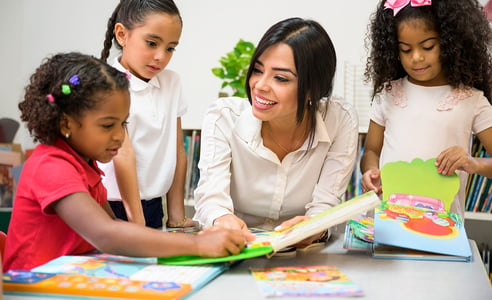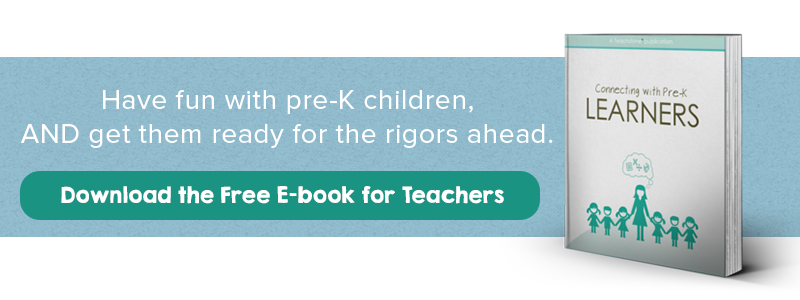
Whether building relationships, supporting language development, or pushing learning, conversations with children are important. (And fun! And funny!) Every afternoon, I walk my dog Holly to the bus stop to wait for my daughter. At the stop, there are a handful of other parents and their pre-K and toddler children. My favorite is a four-year-old who chatters nonstop:
Erin: Can I pet Holly?
Me: Sure. But watch out—she’ll snortle all over you.
(She pets Holly who sniffs and snorts at her hands and face.)
Erin: She snortled me!!!
Me: She sure did snortle you! Does your dog do that?
Erin: No, my dog is biiiggg.
Me: Really? How big?
Erin: I could bring her to your house for a playdate so you could meet her. And I could bring my brother and we could play on your swing set. What are you doing later, cuz I could come play!
That’s an easy conversation to have, because Erin loves to talk and loves my dog. But what about quieter children? Here are a few tips from Making the Most of Classroom Interactions (MMCI) instructors on how to build and extend conversations with children who need more support:
- Write conversation topics or starter sentences on craft sticks, put them in a container in the center of the table, and pull them out (or have a child pull one out) when you want to get children talking.
- Chat about a special item of clothing the child is wearing: “Ohhh ... you’ve got a shark on your t-shirt! What do you like about sharks?”
- Ask open-ended questions! That way, children will be more likely to answer with more language: “Tell me about your drawing. It’s so full of color!”
- Place a small tent in your outdoor/home living area. It’ll likely become the favorite place for the quietest children (you’ll probably hear them chatter like never before)! For the children that needed that extra encouragement to talk, go on a “camping trip” and join them in the tent!
- Use parallel talk. Sit near Sara and pick up some blocks. As you begin to build a small structure, say to Sara, “I am building a corral for my horses today. What are you building?” Talk with her about her play, and then work to include other children in the conversation: “What do you think Jon and Darion are building? I want to hear about it, because it looks pretty complicated. Don’t you?” Usually Jon and Darion will notice, and you can get yourself and Sara invited into their play—and let the conversations begin!
Let me know how these suggestions go--and please do add your own tips for engaging children in conversations.
Editor's Note: This post was originally published on November 4, 2013, but has been updated to keep the content accurate and engaging. Many thanks to Jenn Fowler, Kathy McKechnie, and Pam Parmenter for sharing ideas.

